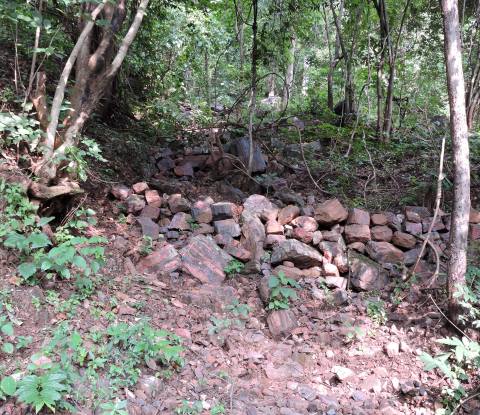Some very recent cases highlight how the report of the T.S.R. Subramanian committee, which reviewed six major green laws, has been released in an atmosphere which is opposed, if not downright hostile, to preserving the environment.
The first is the alleged “policy hurdle” under which the environment ministry till today prohibits the construction of factories occupying more than 20,000 sq metres unless these have first obtained environmental clearance. In September, the environment ministry had promised to amend this rule, introduced when Jayanthi Natarajan was the minister under UPA2, but it has still not done so.
The first factory to be hit by this rule was Hyundai Motors India. Another auto company, which was planning to set up a Rs 3,500-crore plant, has been similarly stymied for the last two years. In fact the Haryana government had sought to prosecute Maruti Suzuki for starting work on its large Rohtak R&D unit, the first outside Japan, without such sanction.
Industrial lobbies also point to the confusion caused by environment appraisal committees under the UPA government asking for 80 to 100 per cent land acquisition, before granting green clearance. Most promoters would not like to invest in acquiring land if they were not assured of being given the green signal later.
While there is certainly a case for simplifying and streamlining environmental laws, the implication of the NDA government’s attitude is clear: nothing should stand in the way of pursuit of industrial progress and environmental clearances are merely roadblocks which ought to be speedily removed. It is common sense that any factory with a footprint of 20,000 sq metres will have an environmental impact. How can a factory be built without such clearance?
A second case relates to Maharashtra, whose proactive Chief Minister Devendra Fadnavis is laying out the red carpet for factories to be set up in the state. The government has decided to amend the Maharashtra Factories Rules of 1963 to enable it to grant a licence to register a factory within just three days. If the licence is not granted in this period, it will be deemed to have been and the copy of the application will be treated as the licence or renewal certificate.
Thirdly, it is in the same vein that Fadnavis has also petitioned the Union environment ministry to clear the much-delayed coastal road straddling Mumbai’s beachfront from Nariman Point in the southernmost tip of the island city to Kandivali in the western suburbs. This road – dubbed a “development” project -- has been opposed by environmentalists because, among other factors, it envisages the reclamation of 110 hectares of land and that too, along the most scenic sites of the metropolis.
Under the Coastal Regulation Zone (CRZ) rules, reclamation of land for road projects is not permitted. On December 15, Fadnavis told the state assembly that Union environment minister Prakash Javadekar had “in principle” cleared the coastal highway on the ground that it will clear the congestion in the city. Within days of the NDA appointing him minister this May, Javadekar had gone on record as saying: “With the Union environment ministry willing to cooperate, we can overcome the coastal regulatory zone hurdle.”

The Bandra Worli Sea Link, Mumbai. Pic: Sourabh Sinha/Wikimedia
Fadnavis had made a pitch for the project on the ground that at Rs 8,000 crores, it would cost only one-sixth of that of a sea link (an extension of the iconic Rs 1,600-crore Bandra-Worli bridge) and the opportunity to create 75 acres of “green” or open space in the reclaimed areas.
Anyone with the slightest knowledge of the environment must realise that far from proving an amenity, such highways, only meant for private motorised transport, only draw more traffic into the congested “old” city. This, at a time when experts the world over are finding ways and means of discouraging motorists from entering central business districts. Traffic jams, already a nuisance in Mumbai, will turn into a nightmare.
Yet another straw in the wind is Maharashtra’s lifting of a ban on sand mining in the Konkan coast’s eco-sensitive zones. Javadekar has told the state that such a ban will only be restricted to 30 per cent of these zones.
It is against such a backdrop that one must view the recommendations of the Subramanian committee. It specifically says that the exercise was to bring laws “in line with current requirements” and “objectives”.
Fix implementation, not the content of the laws
As we have already noted, rules and regulations need to be simplified and procedures hastened. Earlier this year, the Centre for Science & Environment in Delhi brought out a report outlining an agenda for environmental governance in India titled “Strengthen institutions, reform laws and streamline processes”, which speaks for itself.
The most comprehensive reform the committee has recommended is the enactment of the Environmental Laws (Management) Act or ELMA, which will oversee the multiplicity of agencies which process environment and forest clearances and simplify procedures. This will see the creation of the National Environment Management Authority or NEMA with its counterpart in each state – the State Environmental Management Authority or SEMA.
There will be an appellate authority to review the decisions taken on environmental clearances by the environment ministry or SEMAs, as well as special environmental courts in every district to try offences under ELMA. Prima facie, these new laws and agencies seem reasonable enough, but only if one does not see what they will replace.
The Central Pollution Control Board and its similarly named state agencies will be subsumed, as will be existing Supreme Court committees on environment, which include the Central Empowered Committee (CEC) and the Environment Pollution Control Authority (EPCA). Also subsumed will be the powers of the Water Act of 1974, the second environmental law in the country, and the Air Act which followed in its wake.

While the Subramanian committee believes that these agencies delayed clearances due to their cumbersome procedures, which is partly true, the fact remains that 99 per cent of the cases brought before them were cleared, albeit belatedly. Thus the question arises: should they be done away with altogether or reformed? In its findings, the committee itself asserted that while the country “has a strong environmental policy and legislative framework, much of the problem relates to weak implementation of various Acts and rules”.
An anonymous member of the committee has told the media that the Forest Conservation Act of 1980 might have minimised the diversion of forest land to industrial or infrastructure projects, but this has not helped to increase forest cover in the country. Once again, therefore, the question arises: is this because of the law or in spite of it? The committee has found the definition of “forest” ambiguous and suggested that it be replaced with “treeland”, which is an entirely novel concept which greens will find difficult to accept.
Forests and wildlife
Fortunately, the flagship UPA law, the Forest Rights Act, was not under review, but that has not deterred the environment ministry from interfering with the legislation. The tribal affairs ministry has objected to the environment ministry’s orders to “rationalise” certain provisions of the act through executive orders, which has forced the latter to hold back its diktat.
The orders permitted district collectors to unilaterally clear diversion of forest land to expedite “development” projects. The tribal affairs ministry pointed out that the act does not provide “any scope for any executive agency for any kind of relaxation”.
On wildlife, the Subramanian committee proposes “no-go” areas as only those which have 70 per cent tree canopy. (By contrast, the Forest Survey of India defines dense forests as those with 40 per cent cover.) This only applies to the minuscule proportion of the country under national parks, sanctuaries and tiger reserves, which are out of bounds anyway. This large-scale dilution of wildlife laws spells danger for the preservation of wildlife.

A forest patch with iron ore, waiting to be extracted. Pic: Kanchi Kohli (India Together files)
Incidentally, “no-go” areas for mining and other projects have also featured in the Madhav Gadgil committee’s recommendations for the Western Ghats, and had been strongly opposed by state governments during UPA2.
Surprisingly, the Subramanian committee endorses “nature and animal worship [as being] part of the national culture”, which smacks of a genuflection towards Hindutva. It cites the practice of Nagpanchami in states over five days in the month of Shravan in this context, ignoring the fact that this is a blatant violation of wildlife protection laws, not excluding feeding milk to snakes.
Elsewhere, religious practices such as the mass pilgrimages during Shivratri in the Sanjay Gandhi National Park in Mumbai cause a great deal of nuisance. The temple there should not have ever been permitted cheek by jowl with the Kanheri caves, an ancient Buddhist archaeological site.
Once again, the committee seeks to legitimise and sanction dilutions of environmental laws that have been prevailing for some years. The National Wildlife Board’s standing committee has cleared most of the 140 stalled projects in around 80 parks and sanctuaries and has only one wildlife expert. Its remit is to scrutinise projects that fall within these as well as a 10-km radius. The fact that there are now two Gujarat representatives on this committee speaks for itself.




























